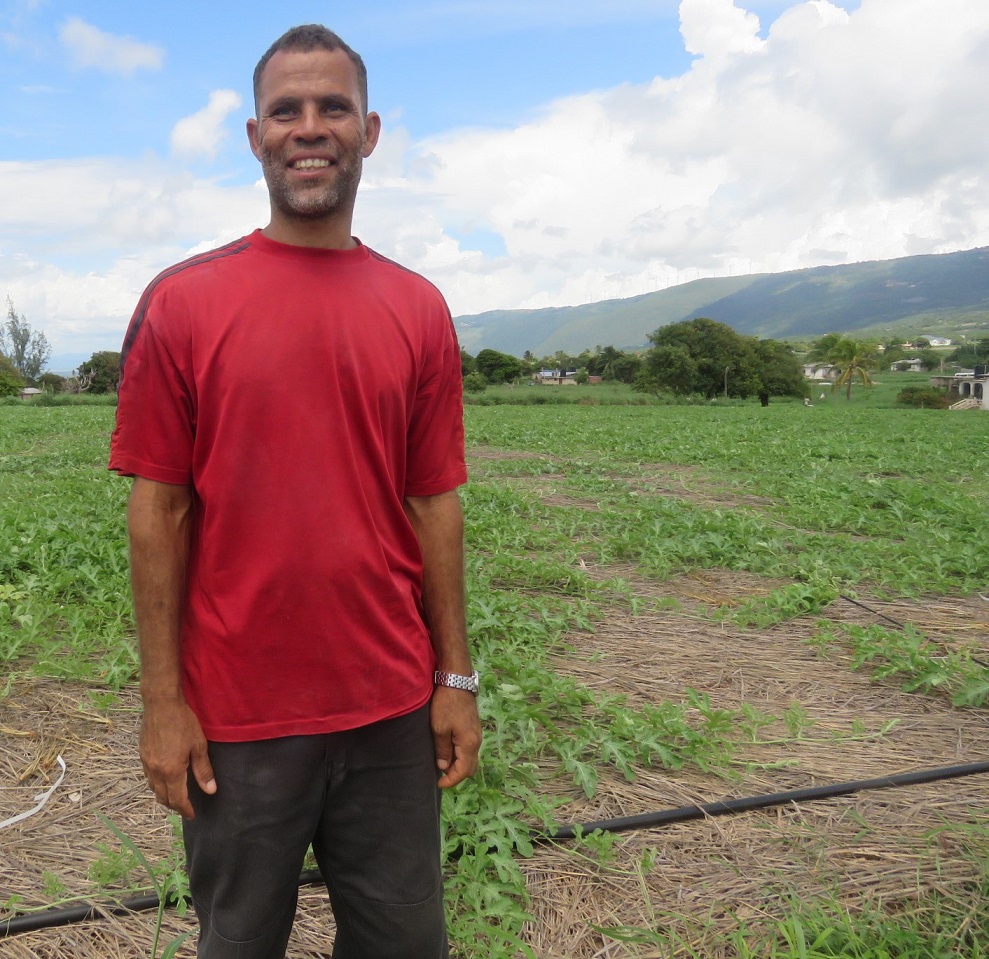The south coast of Jamaica is just right for growing watermelon, where I recently saw the fruit stacked under the shade trees in front of comfortable farm houses. Farmers can earn a tidy living from selling melons on the local market and to the hotels and resorts.

But the trick is to get enough water. In the dry season, a tanker truck will deliver 1000 gallons (almost 4,000 liters) for $50. Most of the farmers economize on water by using drip irrigation. For many years, farmers have saved on water by using mulch, made from the light-weight Guinea grass.

Professional crews cut and dry the grass, which is grown in small fields scattered among the patches of watermelon. The grass crews lay out a neat carpet of mulch, which not only keeps the soil moist, but also suppresses weeds, and creates a soft, clean bed for the fruit to grow, so it develops an attractive, green rind all the way around the fruit. After harvest, the grass decomposes, enriching the soil with organic matter.
I learned about this while visiting Jamaican farmer Junior Dyer, with a group of colleagues. We asked when Junior watered his plants. He said at 9 or 10 AM. âI never water at night,â Junior explained, because if he does that frogs and toads come into the field to eat the insect pests, but then the amphibians stay for the night, digging holes into the moist soil and disturbing the roots. The frogs and toads still come and eat the insect pests when watering is done in the morning, but then they bed down on the edge of the field.
Junior also showed me some of his 13 beehives, which he moves around to pollinate his melons, cantaloupe and cucumbers. I asked Junior if he used insecticides to control major insect pests such as whiteflies, thrips and especially aphids, which transmit disease (like watermelon mosaic virus). He admitted, a bit reluctantly, that he did use insecticides. I asked how he managed that without killing his bees. Junior replied that he looks for insecticide labelled as bee-friendly. In truth, insecticides are never good for bees, but some are less toxic than others.

Juniorâs extension agent, Jermaine Wilson, said that Junior belongs to a farmersâ group, but that the farmers had already observed on their own that toads and frogs are beneficial creatures. Farmers see them eating insects. Beneficial amphibians are an example of how valuable local knowledge often develops around a topic that is culturally important (like watermelon pests) and easy to observe (like toads eating bugs). I found it encouraging that Junior appreciated the frogs and toads, even though they tend to eat larger insects rather than the really small ones that are the main pests in Jamaican watermelon.
I admired the efficient system the Jamaicans have for producing watermelon, even though they still largely rely on insecticides, with little organic production. But the Jamaican farmers are moving in the right direction by encouraging frogs and toads, and beekeeping will certainly motivate them to further reduce insecticides. Watermelons are a fairly sustainable, commercial crop from family farms. The bees pollinate the melon flowers, and the fruit grows nestled in a bed of mulch, precision-watered with drip irrigation. Itâs a nice blend of appropriate technology and local knowledge, with frogs and toads contributing along the way.
Acknowledgements
RADA (Rural Agricultural Development Authority) graciously hosted my visit to Saint Elizabeth Parish, Jamaica, as part of the 10th Annual Meeting of GFRAS (Global Forum for Rural Advisory Services).
Related blog stories
Drip irrigation saves water in South Sudan
Why drip irrigation isnât sinking in
Related video






